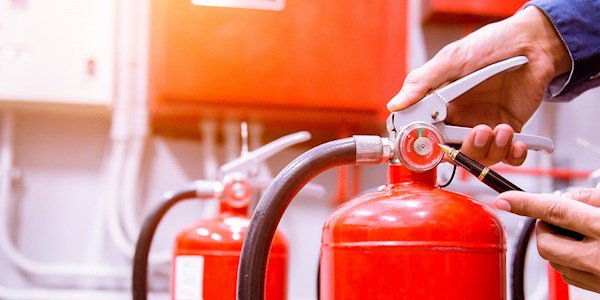
All Australian businesses are required to conduct comprehensive fire risk assessments regularly to identify, assess and mitigate workplace fire risk exposures. Keeping business work areas, employees and interactions with the public safe and ensuring your premises are compliant with fire safety regulations is critical in facing the risk of fire incidents.
The responsibility for a business's fire safety lies with building owners and facility managers. Systems and equipment such as fire extinguishers, sprinklers and emergency warning systems need to be maintained in accordance with Australian Standard AS1851, Routine Service of Fire Protection Systems1, the regulatory safety standards that building owners are expected to meet.
Conducting regular fire risk assessments should form an integral component of a business's risk management framework. Doing this helps to identify and avoid loss events in the workplace and the potential of endangering employee health and safety and disrupting normal business operations.
What are the main consequences of workplace fire events for businesses?
Commercial business operators should have prioritised workplace and people safety processes in place and be aware of the key and common consequences of business fire events, including:
- Injuries and fatalities
Workplace fires may cause significant injuries and fatalities to employees and customers, with burns and smoke inhalation being two of the more common injuries. Victims may require extensive medical treatment for long-term health impacts. - False alarm prevention
To avoid emergency service providers being called to false alarms when a smoke or fire detection device is incorrectly activated, it's important to ensure all fire apparatus is operating correctly. Fire extinguishers, smoke alarms, and sprinkler systems should be regularly checked as part of your fire risk assessment process. - Property damage
Fires can cause significant damage to property, including buildings, vehicles, and personal belongings. Damage can be particularly severe in the workplace due to loss of valuable equipment, inventory, and essential documents. - Business interruption and lost productivity
Forced closure of businesses while awaiting repair may result in loss of business hours, revenue, and potentially customers. Aside from the physical damage, psychological distress may lead to employee absence and compensation. Filing insurance claims and completing paperwork can involve further disruption. Extended times of downtime business interruption is common and has been lengthened in recent years with repair and recovery times much longer than people typically foresee. - Public and employers' liability
Business and/or premises owners may be liable for accidents and faulty (or inadequate) fire safety equipment that relates to workplace fire events. Legal action and high-value claims settlements can be costly, stressful and time consuming, and are generally avoidable. - Increased insurance premiums
A single fire incident can directly trigger a considerable hike in insurance premiums at subsequent renewal/s. These higher premiums can significantly impact the business's bottom line. - Occupational health and safety issues
Occupational health and safety issues can arise in the aftermath of workplace fires, which can release hazardous chemicals into the workplace environment, posing a serious risk to the health and safety of employees, and is a particular risk for those responsible for post fire event clear-up.

